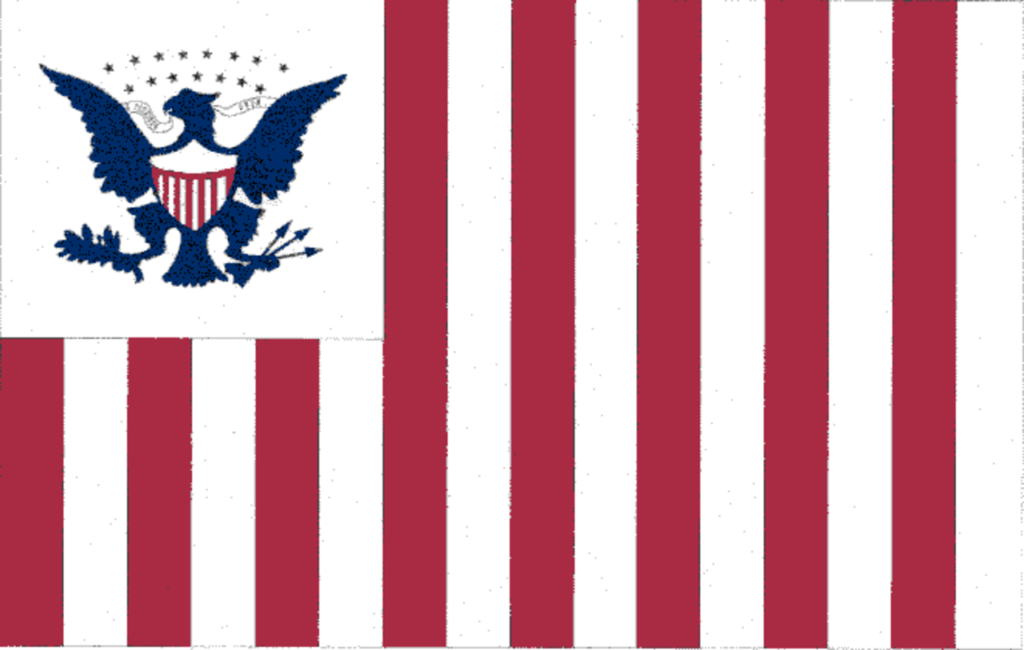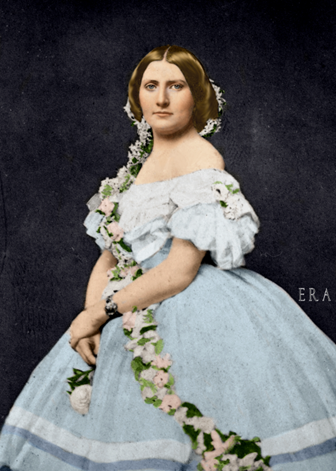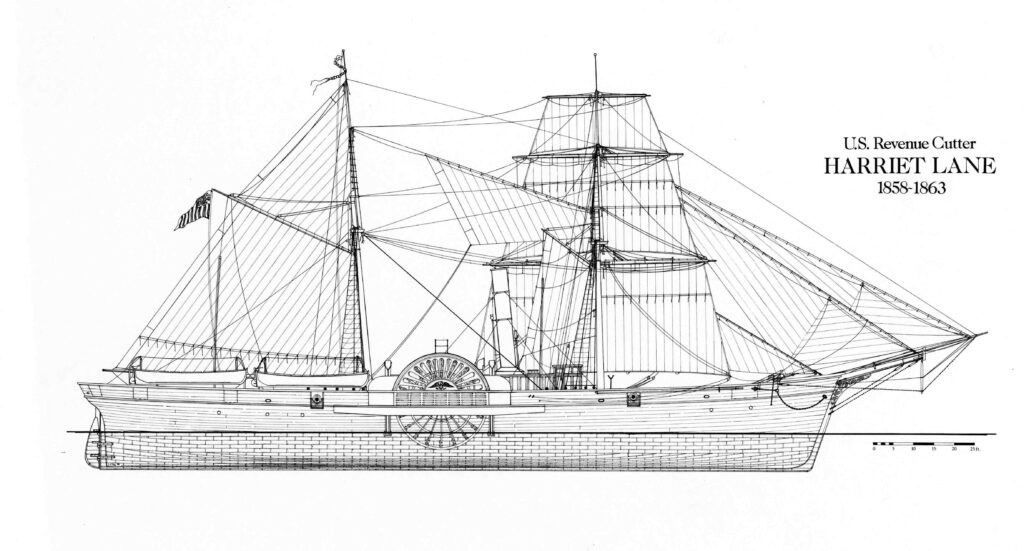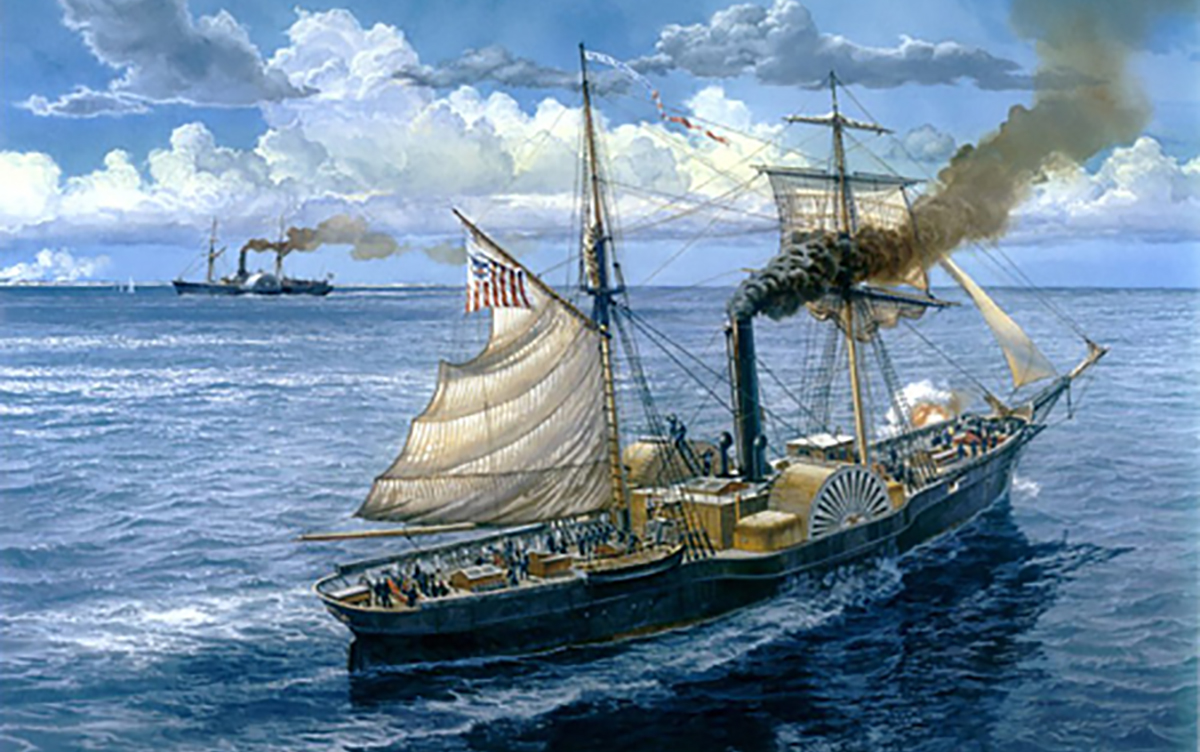The USRC Harriet Lane (1857) was a vessel serving in the United States Revenue Cutter Service from 1861–1881; builder: William Webb, New York, length: 180 ft., navigation draft: 10 ft., beam: 30 ft., propulsion: sail & steam: brigantine-rigged & side wheel paddles; inclined, direct-acting steam engine. Its descendants since then have included USCGC Harriet Lane (WSC-141), a 125-foot cutter in US Coast Guard service 1926-46, and USCGC Harriet Lane (WMEC-903), a medium-endurance cutter in USCG service commissioned in 1984. It was named after the niece, official hostess, and designated First Lady of President (1857-1861) James Buchanan under the auspices of the United States Treasury Department. The 619-ton copper-plated steamer could make speeds of up to eleven knots. Her battery consisted of three thirty-two-pounder and four twenty-four-pounder howitzers.

The Inception of the Revenue Cutter Service
Immediately following our Revolutionary War, the United States struggled financially and desperately needed revenue. Authorities determined to raise money chiefly from tariffs on imports. “Strong enforcement of tariff laws could blunt rampant smuggling [which had also plagued the colonies beforehand]. Urged on by Alexander Hamilton, Secretary of the Treasury, the United States Congress on August 4, 1790, established the Revenue-Marine, later renamed the Revenue Cutter Service by act of July 31, 1894 (28 Stat. 171).”

In October 1858, a punitive expedition was ordered and sent to Paraguay. This expeditionary force, the largest ever assembled by the U.S. Navy until the Civil War consisted of 19 ships, including the brand new and modern Lane, which went to sea with a force of twenty-two Leathernecks. Except for participation in the Paraguay expedition, the Harriet Lane served the revenue service until September 17, 1861. While still in revenue control, she became part of the naval squadron that was sent to reinforce the United States garrison at Fort Sumter in Charleston harbor. After her transfer to the Navy, the ship participated in several significant naval operations. Coast Guard TWS lists 101 members who have served aboard the Lane’s modern-day namesakes.
Voyage to Paraguay: USRC Harriet Lane in the 1858 Naval Expedition
It has been said that a cutter is a small or medium-sized vessel built for speed and with a shallow draft. Some larger 18th and 19th-century cutters had two or three masts; many had only one, located more centrally on the ship than was typical of larger vessels. The Lane had two masts. In modern times, any naval ship built for speed and agility may still be called a cutter. Between 1790 and 1798, the Revenue Marine was the only armed maritime service of the United States as the Navy had been disbanded. Each cutter master was answerable to and received sailing orders directly from the Collector of Customs of the port to which the ship was assigned. All crew pay, requests for supplies, arrangements for repairs to the cutter, and mission-specific tasks came directly from the port’s Customs House. After the Slave Trade Act of 1794 went into effect, the Revenue Marine began intercepting vessels that were illegally bringing African slaves into the United States. In wartime, such as 1812, the Revenue Marine was placed under the command of the U.S. Navy, and the cutters themselves were often brought into military service. These vessels played critical roles in going against piracy as needed, too. Again, they served under the U.S. Navy in the Mexican-American War of 1846–1848, where they were crucial for shallow-water amphibious assaults. In 1832, written orders were issued for revenue cutters to conduct winter cruises assisting mariners in need, and Congress made the practice an official part of regulations in 1837. This was the beginning of the life-saving mission for which the U.S. Coast Guard (founded in 1915) became best known worldwide – a legacy of 125 years by then.

Harriet Rebecca Lane Johnston (1830–1903) was orphaned at the age of nine and lived under Buchanan’s guardianship from that point. President Buchanan was a lifelong bachelor. Harriet was hugely popular and became a trendsetter. She was a model hostess, and the role grew highly complicated as political tensions increased leading up to the Civil War. Lane eventually married Baltimore banker Henry Elliott Johnston at the age of 36. They had two sons: James Buchanan Johnston (1866–1881) and Henry Elliot Johnston (1869–1882), but within the 18 years from 1867 to 1885, her uncle, her husband, and her children all died. She was extremely active in charity work. In memory of her two sons, Harriet dedicated $400,000 to the foundation of the Harriet Lane Home at Johns Hopkins Hospital for pediatric care, which is still active today. Ms. Lane came from the farming country of Franklin County, Pennsylvania, where her family had prospered as merchants. “Her uncle supervised her education in private school, completed by two years at the Visitation Convent in Georgetown. By this time, ”Nunc’ was Secretary of State, and he introduced her to fashionable circles as promised, ”in the best manner.’ In 1854, she joined him in London, where he was minister to the Court of St. James. Queen Victoria gave ”dear Miss Lane’ the rank of ambassador’s wife; admiring suitors gave her the fame of a beauty… She had acquired a sizable art collection, largely of European works, which she bequeathed to our government. Accepted after her death in 1903, the gift inspired an official of the Smithsonian Institution to call her ”First Lady of the National Collection of Fine Arts.’ “
From Battlefront to Blockade: USRC Harriet Lane’s Journey to Galveston
A good summary of the ship’s first battle encounters and eventual destiny is as follows:
“In April 1861, with the standoff between Federal and Confederate forces in Charleston, South Carolina, President Lincoln authorized an expedition to relieve Fort Sumter. The expedition consisted of transporting 500 troops and an armed escort, including USRC Harriet Lane. During the voyage south, a severe storm separated the cutter from the convoy, so she arrived on April 11 before the other ships. News of the cutter’s arrival spread quickly in Charleston. In the early morning of April 12, Confederate cannons at Fort Moultrie opened fire on Fort Sumter to prevent the fortress’s reinforcement. These were the first artillery shots fired in the Civil War.

Later that morning, elements of the expedition found Harriet Lane at a pre-arranged rendezvous point, and the revenue cutter tried to escort them to beleaguered Fort Sumter. As the ships neared the fort, artillery fire grew so heavy that the expedition had to turn back. Harriet Lane returned to her station guarding the harbor entrance, and later that morning, the cutter observed the approach of a steamer flying no colors. The cutter ordered the vessel to heave to and show her colors. The unidentified vessel ignored these signals and steamed on toward Charleston. Captain Faunce ordered a 32-pound cannon shot fired across the ship’s bow, which turned out to be the South Carolina steamship Nashville. Historians consider the shot across Nashville’s bow the first naval shot of the Civil War. Nashville finally raised an American flag, and Faunce allowed her to pass into Charleston Harbor; however, the Nashville later served as an infamous blockade runner and Confederate cruiser…

With cannon fire raining down on Fort Sumter and no protection for the Federal ships, further relief efforts appeared futile. Federal forces within the fort finally raised a flag of truce, and the relief expedition evacuated the garrison from the fort. USRC Harriet Lane escorted the ships back to New York. He continued to serve a vital role in Union naval operations until her capture in 1863 by an overwhelming Confederate force at Galveston, Texas. After she served under the Confederate Marine Department of Texas, she was converted into a blockade runner and named Lavinia.
Following blockade duty in Mobile Bay, the Lane sailed for Galveston, Texas, which she bombarded and captured, with the aid of the Westfield, Owasoo, Clifton, and Henry Janes on October 3, 1862. She was in Galveston Harbor when the Confederates retook that base on January 1, 1863, and, after a bitter contest in which her captain, Comdr. J. M. Wainwright and executive officer, Lt. Comdr. Edward Lea, gave their lives; the Lane fell into Confederate hands. She later departed Galveston on April 30, 1864, and sailed to Havana, where Cuban authorities interned her. In 1867, the cutter and former captain were re-united when Faunce and a crew traveled to Havana to return Lavinia (ex-Harriet Lane) to the United States. The cutter was then converted to a bark rig, sold to private owners, and renamed the Elliott Richie. On May 13, 1884, after nearly thirty-five years of government and commercial service, she was finally abandoned to the waters near Recife off Pernambuco, Brazil.”
Recife, the capital and largest city of Pernambuco is Brazil’s shipwreck epicenter. Due to the proximity of a long reef running parallel to the harbor, there are a large number of shipwrecks all along there. Diving is especially popular in Recife due to the one hundred and more vessels to be found under the waters just offshore. Some of these, such as the former Lane, were intentional, though most of them sank as a result of colliding with the reef; there are countless wrecks of many ship types, from war galleons to barges. And so, far away there rests our own USRC Harriet Lane, a proud time-honored vessel of national maritime service, duty done truly well.
Read About Other Famous Military Units
If you enjoyed learning about USRC Harriet Lane, we invite you to read about other Famous Units on our blog. You will also find military book reviews, veterans’ service reflections and more on the TogetherWeServed.com blog. If you are a veteran, find your military buddies, view historic boot camp photos, build a printable military service plaque, and more on TogetherWeServed.com today.

0 Comments